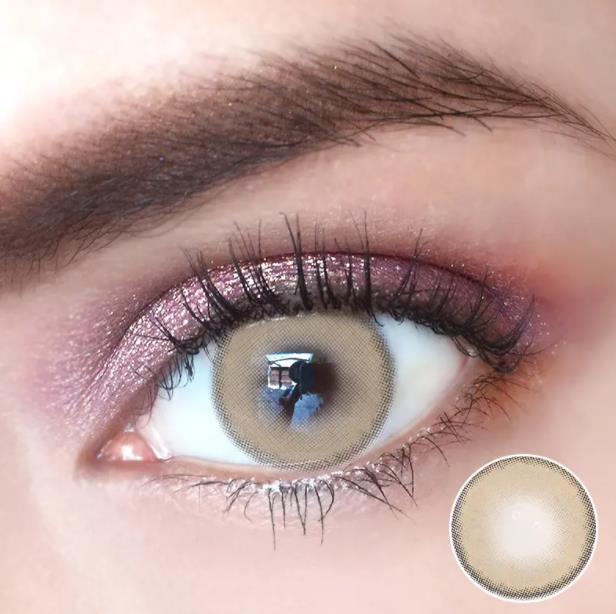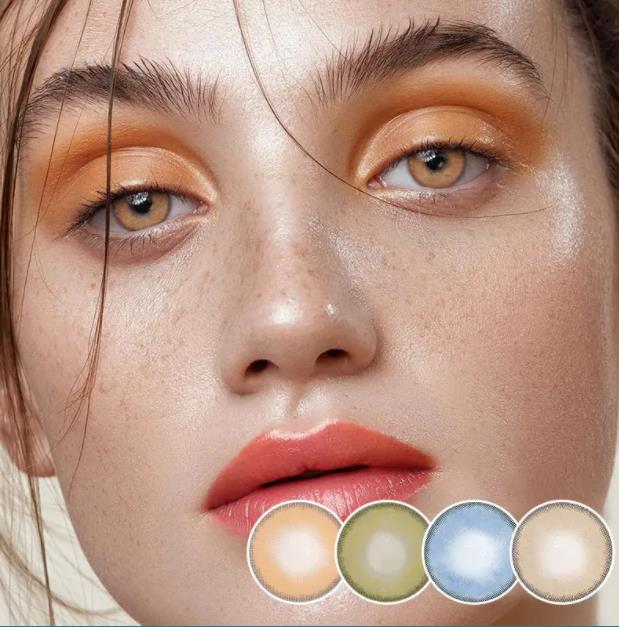Contact lenses are most commonly used to correct blurry vision, but sometimes people wear different colored contact lenses just for fun. With Halloween approaching, people are quickly stocking up on red, black, or cat contact lenses to look even scarier. Researchers are currently working to integrate these small hydrogels into smart devices for color blindness treatment, wearable virtual displays, and drug delivery and non-invasive health monitoring. Below are some of the articles recently published in the journal ACS that report on the power of smart contacts and new ways to deliver drugs with them. Journalists may request free access to these documents by e-mailing newsroom@acs.org.
colored contacts halloween
Powering Smart Lenses “Safe, durable and sustainable self-powered smart contact lenses” ACS Nano September 7, 2022 Researchers show that glucose in tears can power smart contact lenses. They placed tiny glucose fuel cells between layers of soft hydrogel. The combination of a fuel cell with an array of color-changing crystals resulted in a prototype sensor that could clearly distinguish artificial tears that mimic a diabetic condition from controls. The device still needs to be scaled down to be used in glucose-sensitive contact lenses, the researchers said.
“Flexible and translucent silicon solar cells as power sources for smart contact lenses” ACS Applied Electronics Materials August 1, 2022 In this article, flexible translucent solar cells are designed to power microelectronics and optoelectronic elements in smart contact lenses. The researchers formed 15 micron-thick silicon photovoltaic panels into arcs by inserting them into domed lenses. Based on indoor and outdoor lighting experiments, the researchers calculated that their 25% and 50% transparency solar cells could generate 49.3 and 26.6 Jcm-2 of energy per day, respectively, demonstrating their potential to power smart contact lenses.
Drug Delivery “Printed Metal-Polymer Conductors for Local Drug Delivery” Nano Letters September 19, 2022 Locally administered drugs, such as drops or ointments, can more easily enter the body through the local application of electricity. As a step towards using this technique to treat eyes and skin, the researchers printed liquid metal contours onto stretchable and flexible polydimethylsiloxane sheets that mimic contact lenses and skin patches. In animal testing, applying electrical impulses to metal-polymer contact lenses has been found to improve the therapeutic effect of eye drops.
colored contacts halloween
“Pressure-activated microfluidic contact lenses for eye drug delivery” ACS Applied Polymer Materials September 7, 2022 Most eye infections are treated with drops, but blinking and tears quickly wash them away. So researchers have developed a prototype smart contact lens that can gradually deliver drugs directly into the eye. The lenses have curved microfluidic channels and micropumps activated by eyelid pressure. When blinking is simulated, the flexible clear lens releases a drug-like fluid in a controlled and sustained manner without the need for electronics.
Post time: Oct-09-2022





